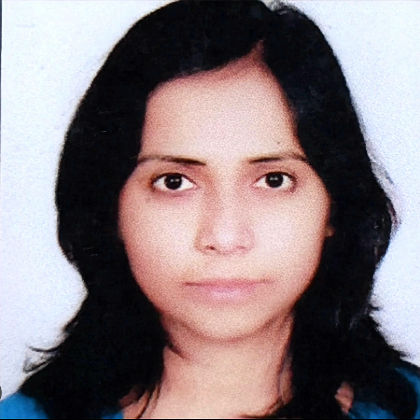Impetigo: Information on Causes and Treatment
Know about impetigo, what it is, symptoms, causes, how it is treated, and how it can be prevented.


Introduction
If you or your child has developed red, itchy sores that ooze and form a honey-colored crust, it could be impetigo, a common and highly contagious skin infection. While it may look concerning, impetigo is usually mild and treatable. This article will help you understand what causes it, how to recognise the symptoms, and the best ways to manage and prevent it.
What Is Impetigo?
Impetigo is a bacterial skin infection caused by Staphylococcus aureus or Streptococcus pyogenes bacteria. It mainly affects children but can occur in adults as well. The infection spreads easily through direct contact with sores or contaminated items like towels, clothing, or toys.
There are two main types:
1. Non-bullous impetigo – The most common type, causing small blisters that burst and form a golden crust.
2. Bullous impetigo – Causes larger, fluid-filled blisters that stay intact longer before bursting.
Consult a Dermatologist for Personalised Advice
Symptoms of Impetigo
The infection usually starts with red sores that quickly turn into blisters. Common signs include:
- Small, itchy red spots that develop into blisters
- Blisters that burst and ooze fluid
- Formation of a yellow-brown crust
- Mild pain or discomfort
- Swollen lymph nodes (in some cases)
Impetigo most often appears on the face (around the nose and mouth), hands, and arms, but it can spread to other body parts if scratched.
What Causes Impetigo?
Bacteria enter the skin through small cuts, insect bites, or existing skin conditions like eczema. Factors that increase the risk include:
- Close contact with an infected person
- Warm, humid weather (more common in summer)
- Poor hygiene (not washing hands frequently)
- Crowded environments (schools, daycare centres)
- Skin injuries (cuts, scrapes, or insect bites)
How Is Impetigo Treated?
Impetigo usually clears up within 7–10 days with proper treatment. Depending on the severity, your doctor may recommend:
1. Antibiotic Creams (Topical Treatment)
- For mild cases, an antibiotic ointment (like mupirocin or fusidic acid) is applied to the sores.
- Wash the affected area with mild soap and water before applying the cream.
2. Oral Antibiotics
- If the infection is widespread or severe, your doctor may prescribe oral antibiotics (like flucloxacillin or erythromycin).
- Complete the full course even if symptoms improve to prevent recurrence.
3. Home Care Tips
- Keep the sores clean – Gently wash with warm water and mild soap.
- Avoid scratching – Cover sores with a bandage to prevent spreading
- Wash hands frequently – This reduces the risk of spreading bacteria.
- Use separate towels and bedding – Wash them in hot water to kill bacteria.
Can Impetigo Be Prevented?
Yes. Follow these steps to reduce the risk:
- Practice good hygiene – Wash hands regularly with soap.
- Cuts and scrapes – Keep wounds clean and covered.
- Avoid sharing personal items – Like towels, razors, or clothing.
- Keep nails short – Prevents bacteria from spreading when scratching.
- Stay home if infected – Avoid school or work until 24–48 hours after starting antibiotics.
When to See a Doctor?
Most cases improve with home care, but consult a doctor if:
- Sores spread or worsen despite treatment
- Fever or swollen lymph nodes develop
- The infection keeps coming back
You notice signs of deeper infection (increased pain, redness, or pus)
Final Thoughts
Impetigo may look unpleasant, but it’s usually harmless and easy to treat. With proper hygiene and timely care, most people recover quickly. If you or your child shows symptoms, start treatment early to prevent spreading.
Consult a Dermatologist for Personalised Advice
Consult a Dermatologist for Personalised Advice

Dr. S Madhuri
Dermatologist
10 Years • MBBS, MD. DVL, DNB, Fellow (Dermatosurgery & Lasers)
Secunderabad
Apollo Hospitals Secunderabad, Secunderabad
(325+ Patients)

Dr. Sonal Jain
Dermatologist
9 Years • MBBS, MD (Skin & VD), DNB (DVL), Fellowship in Dermato Surgery
East Midnapore
VIVEKANANDA SEBA SADAN, East Midnapore

Dr. Sushil Singh
Dermatologist
6 Years • MBBS, MD Dermatology, Venerology & Leprosy
Kolkata
MCR SUPER SPECIALITY POLY CLINIC & PATHOLOGY, Kolkata

Dr. Somshukla Ray
Dermatologist
10 Years • MBBS, MD (Dermatology,Venerology & Leprosy), DNB (Dermatology,Venerology & Leprosy)
Kolkata
MCR SUPER SPECIALITY POLY CLINIC & PATHOLOGY, Kolkata
(25+ Patients)

Dr. Asad Ansari
Dermatologist
14 Years • MBBS, DDVL
Kolkata
MCR SUPER SPECIALITY POLY CLINIC & PATHOLOGY, Kolkata
Consult a Dermatologist for Personalised Advice

Dr. S Madhuri
Dermatologist
10 Years • MBBS, MD. DVL, DNB, Fellow (Dermatosurgery & Lasers)
Secunderabad
Apollo Hospitals Secunderabad, Secunderabad
(325+ Patients)

Dr. Sonal Jain
Dermatologist
9 Years • MBBS, MD (Skin & VD), DNB (DVL), Fellowship in Dermato Surgery
East Midnapore
VIVEKANANDA SEBA SADAN, East Midnapore

Dr. Sushil Singh
Dermatologist
6 Years • MBBS, MD Dermatology, Venerology & Leprosy
Kolkata
MCR SUPER SPECIALITY POLY CLINIC & PATHOLOGY, Kolkata

Dr. Somshukla Ray
Dermatologist
10 Years • MBBS, MD (Dermatology,Venerology & Leprosy), DNB (Dermatology,Venerology & Leprosy)
Kolkata
MCR SUPER SPECIALITY POLY CLINIC & PATHOLOGY, Kolkata
(25+ Patients)

Dr. Asad Ansari
Dermatologist
14 Years • MBBS, DDVL
Kolkata
MCR SUPER SPECIALITY POLY CLINIC & PATHOLOGY, Kolkata